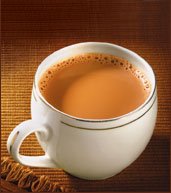 |
| Wagh Bakri Tea Lounge Mumbai |
 |
| Iced Mint Tea |
 |
| Iced Tea |
There are more than 120 countries where the hot beverage is consumed. The taste for the hot brew is rising fast keeping in the the appealing flavors as well as the health benefits. In India consumption became a lifestyle after massive campaigns during the British Rule. In order to compete with the Chinese cultivation seeds and technology were both introduced from China.
Besides the countries mentioned a lot of tea is consumed in Britain. The brew also finds patrons in Europe and North America. With innovations in packing as well as development of iced and bottled tea the trend in coffee drinking countries is changing fast. More and more people are attracted to these products. Similarly the rising popularity of green leaf is also contributing to the growth.
Some of the main buying markets are Russia, USA, Canada, Pakistan, Morocco, Egypt, Iran and UK. In countries like USA the maximum consumption is that of iced tea now sold in bottles and vending machines.
Per Capita consumption patterns of tea drinking countries.
Turkey 6 + Kg
Morocco 4 + Kg
Ireland 3 + Kg
Mauritania 3 + Kg
United Kingdom 2 + Kg
Though green tea consumption is increasingly attracting coffee drinkers it is the black tea that finds phenomenally large number of tea lovers.














